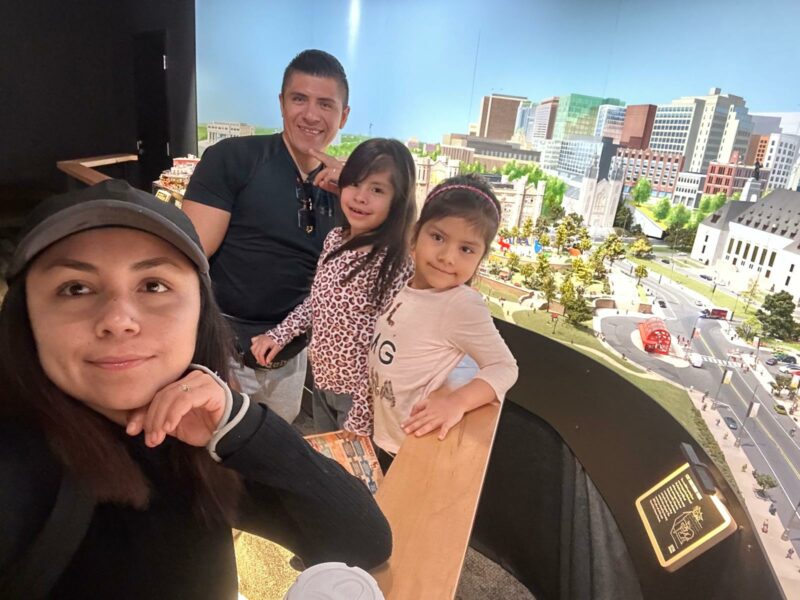Welcome to “Voices of Home,” an exclusive peek into the minds and experiences of the passionate individuals who make up the heart of Homes First. In this Thought Leadership Series, we invite you to embark on a journey with us as our employees share their insights, expertise, and personal stories. From innovative approaches to tackling housing challenges to reflections on community impact, each blog piece offers a unique perspective that sparks conversation and inspires action. Join us as we delve into the diverse perspectives and thought-provoking ideas that drive positive change in the realm of housing and beyond.
Expanding Definitions of Gender-Based Violence

This article was written by Andrew Winchur, Community Development and Client Programming Supervisor at Homes First.
Homes First is a massive organization. As I write this, over 1750 emergency shelter residents are housed in Homes First facilities every single night—a figure that accounts for more than a quarter of all shelter capacity in the City of Toronto (personal interview 2024). In this pivotal role, we as an agency are inevitably serving hundreds of survivors of Gender-Based Violence (GBV) at any one time—even while it remains true that none of our shelter programs was explicitly set up with that aim (Ibid.). Anyone with frontline experience can tell you that GBV survivors will not automatically self-disclose abuse when entering a shelter, for a wide variety of reasons: a given client might wait until they are working with a specific ICM or CSW they trust; or they might withhold this information altogether (Ibid.; CHRGM 2022 69-105).
Such disclosures can be so very critical in getting survivors the resources they need to take those first, difficult steps out of homelessness and into greater safety—but these disclosures depend on a certain pre-existing level of trust and empathy. When social workers foster a caring relationship, vulnerable (often traumatized) survivors might just decide to take a risk on us and let us into their unique situations. It is therefore incumbent upon care workers of all types—whether frontline CSWs, ICMs, supervisors or Site Managers—to cultivate an understanding of GBV that is critical, expansive and inclusive.
Unfortunately, even in seemingly-progressive cities like Toronto, an overly narrow definition of GBV is allowed to hold sway, one concerned only with a particular subset of Intimate Partner Violence (IPV)—the physical and/or emotional abuse inflicted by a cis-man upon his heterosexual female-identifying partner (CWF & Wisdom2Action 2022, 7). Yet as so many queer activists and organizations are at pains to point out, transphobia, homophobia, and biphobia are structural forms of GBV that 2SLGBTQ+ communities must navigate every day in their public and private lives (Ibid). Moreover, queer communities experience GBV in ways that cisgender and heterosexual people do not, sometimes involving unique forms of abuse. “Queering Gender-Based Violence Prevention & Response in Canada”, a joint 2022 report published by the Canadian Women’s Foundation and Wisdom2Action, outlined the following additional forms of GBV:
- experiences of “corrective” sexual violence
- outing, or threats to out, survivors’ sexual orientation
- threats of ostracization from the 2SLGBTQ+ community
- portrayals of GBV as mutual and even consensual
- withholding of gender-affirming gear, hormones, and surgery
- verbal abuse related to someone’s gender identity, sexuality, or sex characteristics (Ibid., 8)
To give local context to this more inclusive definition, it is worth pointing out that, as of April 2022, Homes First ICMs at Pacewood—a site designed specifically for LGBTQIA-identifying newcomers—shared that 100% of residents reported past experiences of discrimination based on residents’ gender or sexual identity (personal interview 2023).
To be clear, LGBTQ-inclusive definitions of GBV do not, and should not, negate the very real epidemic of patriarchal violence against women, which has formed the basis of more traditional discourses on GBV prevention. As the Canadian Women’s Foundation succinctly argued earlier this year,
We are taught patriarchal and sexist cultural messages that make it seem natural and acceptable for men to have more power than women and people of other genders. In this context, the belief that men have a right to control and harm women, girls, and gender-diverse people is common (2024).
In the context of GBV prevention, it is also worth pointing out that an overwhelming majority (79%) of Canadians reporting IPV to police are women (Conroy 2021). Sixty-seven per cent of people who experience family violence are women and girls. Hitting even closer to home, the Canadian Observatory on Homelessness reported that, in 2016, 3,491 Canadian women sleep in shelters because it isn’t safe at home; and close to 300 women and children are turned away from crucial supports each day because shelters are full (Beattie and Hutchins 2014).
What must be resisted at all costs is a no-win “race to the bottom”, whereby GBV survivors of different positionalities are pitted against each other in a struggle for diminishing resources: the safety of 2SLGTBQIA+ communities does not and will never come at the expense of cis-hetero women. Instead, a queer-informed understanding of GBV demands a systemic expansion of appropriate supports—expansion in a double sense here, of objectively more shelter beds for GBV survivors, and ensuring queer inclusivity within shelter care models. Only an expansive, intersectional vision of GBV supports is worth fighting for: one that recognizes the diversity of gendered experiences and bodies under attack, one that struggles for the care and empowerment of all survivors.

Andrew (he/him) has worked for Homes First since January 2020. He holds a Masters of Education, Counselling and Psychotherapy and a Masters in Environmental Studies, respectively. His mixed arts practice can be found on Instagram, @wordstendtobeinadequate.
Works Cited
Beattie, Sara and Hope Hutchins (2014). Shelters for Abused Women in Canada. Statistics Canada.
Canadian Women’s Foundation & Wisdom2Action (2022). Queering Gender-Based Violence Prevention and Response in Canada. Web.
Center for Human Rights, Gender and Migration (CHRGM), Washington University’s Institute for Public Health (2022). GBV Disclosure Toolkit: Responding to Gender-based Violence Disclosure in Humanitarian Crisis Settings. Web.
Conroy, Shana (2021). Family Violence in Canada: A Statistical Profile. Canadian Centre for Justice and Community Safety Statistics.
Kerr, Lacey, Assistant Director of Client Services (2024). Interview. Conducted by Andrew Winchur. March 7, 2024.
Kerr, Lacey, Assistant Director of Client Services (2023). Interview. Conducted by Andrew Winchur. November 2023.


